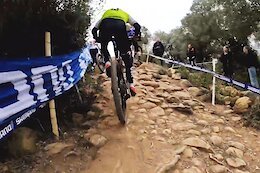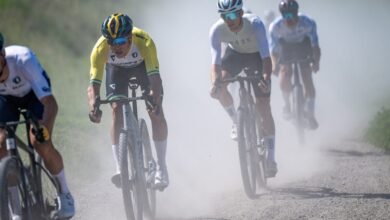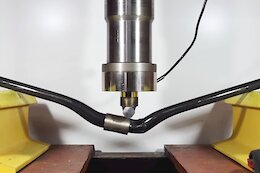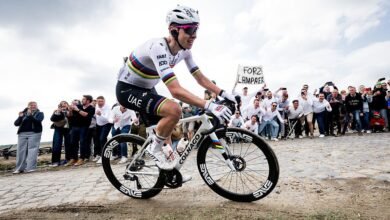How Do Endurance Athletes Recover?

We all love a good sufferfest, but here’s the truth bomb: without recovery, your training is just stress with a fancier name. Life—and sport—is a constant dance between stimulus and recovery. Most of us get starry-eyed about the grind and forget that adaptation doesn’t happen during intervals, it happens after. A new study out of the Netherlands dives into how endurance athletes and coaches actually approach recovery, and it turns out, most aren’t skipping the basics… even if they’re tempted by cryo-chambers and influencer-endorsed cold plunges. Let’s dig in—because sleeping more might be the best upgrade to your fitness you’re not even tracking.
Life is a balance. Stimulus + RECOVERY = Adaptation. This is the basic formula for physiology and training (and life). Most of us focus on the training (STIMULUS) side but not enough on the RECOVERY side of this equation.

Stress is needed to maintain our physiological systems. You can see that in astronauts and people confined to bedrest, in that the lack of gravitational strain on their bodies causes a systemic atrophy and decline. Muscle mass, cardiovascular capacity, bone mineral density all decrease because space (or bedrest) reduces the need for the body to fight against gravity.
But too much stress is also bad for us. Think of animals living much longer in zoos when they are in a controlled environment safe from predation, versus their kin in the wild constantly facing underlying stress and on the alert to avoid being some predator’s lunch. For athletes, too much continued stress from training or life eventually leads down the road to overtraining syndrome, which can cause not only lack of pleasure in sports but also wholesale physiological shutdown.
So the key is balancing training (and life) stress with appropriate recovery, and this is where many athletes fall down. It’s easy and fun to obsess over our training data and design the optimal interval workout or training program. It’s harder and much less fun to obsess over recovery, because things like adequate sleep isn’t sexy. It also becomes easy to be overwhelmed by bro science (cold plunges anyone?).

Li et al. 2025
Since sport science is often driven by what athletes and coaches are doing at the coal face of elite performance, a good starting point in understanding recovery habits amongst endurance athletes is simply to ask them. And this is exactly the purpose of a 2025 Dutch study in the International Journal of Sports Physiology and Performance (Li et al. 2024).
This survey study ran as follows:
- 143 athletes (>16 years old) and 20 coaches (>18 years old) completed the online survey. I couldn’t determine how broad the survey was, but from the Methods section it seems that it was mostly local rather than an international survey. It was conducted between April 2022 and April 2023.
- Athletes were categorized as International (26.6%), National (35.7%), Regional (28.7%), and Others (9.1%).
- 25 recovery strategies were studied, categorized into “Active,” “Nutrition,” “Massage,” “Temperature-based,” and “Others.” Questions included perceived importance and effectiveness, type, frequency, reasons for choosing particular recovery methods, and barriers to not using the methods.
“Survey Says…”
The study captured a broad cross-section of endurance athletes and coaches, with a strong representation of cyclists, triathletes, and runners. Surprisingly, no swimmers participated. Most of the athletes were indeed Dutch and in the range of 18-30 years old, and were pretty well-educated with typically a bachelor’s degree.
What were some of the highlights?
Interestingly, coaches were a big influence, with 82.5% of athletes across all levels declaring their coach as their biggest influence. This means that, to educate athletes, we must also educate and work with coaches and other members of their support team. Most athletes and coaches agreed that more education on recovery methods is useful.

The top three most used recovery strategies were: 1) Hydration, 2) Hot showers, and 3) Carbohydrates.
Recovery methods were pretty similar in both frequency of usage and perceived usefulness across competitive levels, with minor variations. “Warm/cool down” ranked 2nd and 3rd in International and Regional, respectively. Antioxidants were also considered useful with International and Others, but not with National and Regional.

The most frequently prescribed recovery methods for coaches were “warm/cool down,” “hydration,” and “extra protein.” Athletes tended to use “hydration” and “hot showers” more than prescribed by coaches. In contrast, coaches placed much higher importance on sleep than athletes did as a recovery method.
Not surprisingly, the biggest barriers for busy athletes was a lack of time, followed by lack of knowledge and lack of materials. The lack of time was most relevant to International, while other groups reported lack of budget, knowledge, or uncertain effectiveness. I would say that this follows expectations, as emerging athletes often lack sponsorship/budget, while elite athletes are constrained more by lack of time from multiple commitments and higher training loads.
Coaches also highlighted not seeing the benefit and lack of budget as critical. I’m definitely not suggesting that every one of the 25 recovery methods are beneficial, but this to me highlights again the need to help coaches and athletes with solid, evidence-based, and practical knowledge to aid their decision making.
Summary
My main takeaway from this survey is that much of good recovery is neither hard nor sexy, and fortunately this seems to be the common awareness of (mostly) Dutch athletes across all competition levels. It’s basic practices like warm/cool downs, good nutrition, and hydration rather than fancy (and objectively minimally effective) frills like cold water immersion or cryotherapy or a particular nutrient. We should all be taking the same approach of getting the big things right drilling down to marginal gains.
Want to read more on the science of specific recovery strategies? Let me know!
Rest hard, ride fast, and have fun!

References
Li S, Kempe M, Lemmink KAPM (2024) Recovery Strategies in Endurance Sports: A Survey in Coaches and Athletes. International Journal of Sports Physiology and Performance 20:120–130. https://doi.org/10.1123/ijspp.2024-0032
Like PEZ? Why not subscribe to our weekly newsletter to receive updates and reminders on what’s cool in road cycling?





